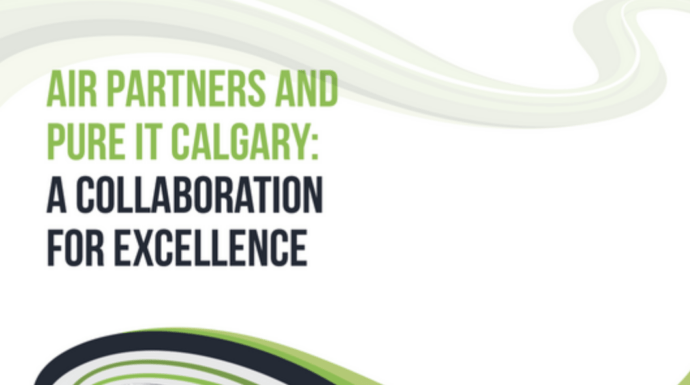10 Reasons Every Organization Needs An ERP System Going Into 2025: Streamlining Operations for Future Success
As we approach 2025, businesses face increasing pressure to streamline operations and boost efficiency. Enterprise Resource Planning (ERP) systems have become essential tools for organizations seeking to integrate various business processes and data into a single, unified platform.
ERP systems offer numerous benefits to help your organization thrive in the rapidly evolving business landscape. From improving data accuracy to enhancing decision-making capabilities, these comprehensive solutions provide a competitive edge that is becoming increasingly crucial. Let’s explore ten compelling reasons why your organization should consider implementing an ERP system as we move toward 2025.
1) Automated Financial Reports
ERP systems revolutionize financial reporting by automating the process. You no longer need to manually compile data from various sources, saving precious time and reducing errors.
With an ERP, you can generate real-time business intelligence at the click of a button. This allows you to make informed decisions quickly based on up-to-date financial information.
Automated reports provide a comprehensive view of your organization’s financial health. You can easily track key performance indicators, cash flow, and profitability across different departments or business units.
ERP systems offer customizable reporting templates. You can tailor these to your needs, ensuring you always have the most relevant financial information.
The accuracy of automated financial reports is unparalleled. By eliminating manual data entry, you significantly reduce the risk of human error in your financial statements.
Compliance becomes easier with automated reporting. Many ERP systems are designed to meet industry-specific regulatory requirements, helping you stay compliant with less effort.
You can schedule reports to be generated and distributed automatically. This ensures that key stakeholders can always access the latest financial data without manual intervention.
With cloud-based ERP solutions, you can access your financial reports anytime. This flexibility is invaluable in today’s fast-paced business environment.
2) Enhanced Inventory Management
ERP systems provide powerful tools for managing your inventory more effectively. You can track stock levels in real-time across multiple locations, reducing the risk of stockouts or overstocking.
With an ERP, you gain better visibility into your supply chain. The system can automatically reorder products when stock falls below set thresholds, ensuring you always have the right inventory.
ERP inventory management modules offer detailed reporting and analytics. You can easily identify slow-moving items, track expiration dates, and analyze sales trends to optimize your inventory mix.
These systems also improve accuracy by reducing manual data entry errors. Barcode scanning and RFID integration streamline receiving and picking processes, minimizing mistakes and saving time.
ERP solutions enable just-in-time inventory practices, helping you reduce carrying costs while meeting customer demand. You can better coordinate with suppliers and adjust stock levels based on real-time sales data.
ERPs centralize inventory data and provide a single source of truth across your organization. This improves coordination between sales, purchasing, and warehouse teams, leading to more efficient operations.
3) Streamlined Operations
ERP systems excel at streamlining operations across an organization. By integrating data and processes from various departments, you can eliminate redundancies and inefficiencies.
With an ERP, you gain complete visibility into core business processes. This transparency allows you to identify bottlenecks and areas for improvement quickly.
ERP solutions automate many routine tasks, freeing up your employees to focus on more strategic activities. This automation reduces human error and increases overall productivity.
You can standardize processes across different locations or departments, ensuring consistency in operations. This standardization makes it easier to scale your business and maintain quality control.
ERP systems provide real-time data access, enabling faster decision-making. You no longer need to wait for reports from different departments to get a complete picture of your operations.
With streamlined operations, you can respond more quickly to market changes and customer demands. This agility gives you a competitive edge in today’s fast-paced business environment.
ERP solutions also facilitate better collaboration between departments. When everyone has access to the same information, communication improves, and teams can work together more effectively.
An ERP system can help reduce process times and centralize enterprise data by optimizing operations. This efficiency can lead to significant cost savings and improved overall organizational performance.
4) RealTime Data Access
Real-time data access is a game-changer for organizations implementing ERP systems. An ERP gives you immediate visibility into critical business information across departments.
This instant access allows you to make informed decisions quickly. You can promptly respond to market changes, customer demands, and operational issues.
ERP systems offer real-time data access that helps you better understand customer needs and meet demand. This capability enhances your ability to plan for the future effectively.
Real-time data also improves inventory management. You can track stock levels accurately, reducing the risk of stockouts or overstocking. This optimization leads to cost savings and increased customer satisfaction.
With real-time access, financial data becomes more transparent. You can monitor cash flow, expenses, and revenue streams as they happen, allowing for more accurate forecasting and budgeting.
ERP integration ensures data consistency across all platforms. You can trust that the information you’re viewing is up-to-date and reliable, regardless of which department it comes from.
Real-time data access also enhances collaboration between teams. Everyone works with the same current information, reducing errors and improving efficiency.
5) Improved Customer Service
ERP systems can significantly enhance your organization’s customer service capabilities. Centralizing customer data gives you a comprehensive view of each client’s interactions, preferences, and history.
This consolidated information allows your customer service team to respond more effectively to inquiries and issues. They can access relevant details instantly, leading to faster problem resolution and improved customer satisfaction.
ERP systems enable better order tracking and management. You can give customers real-time updates on their orders, from processing to delivery. This transparency builds trust and reduces the need for customers to contact you for status updates.
An ERP system allows you to analyze customer data to identify trends and preferences. This insight allows you to tailor your products or services to better meet customer needs, potentially increasing loyalty and retention rates.
Unified customer information across departments ensures consistent communication. Whether customers speak with sales, support, or accounting, they receive the same level of informed service.
ERP systems can automate routine customer service tasks, allowing your team to focus on more complex issues. This efficiency can lead to shorter wait times and more personalized customer attention.
ERP systems help you manage customer interactions more effectively by integrating customer relationship management (CRM) functionalities. You can track communication history, set follow-up reminders, and ensure no customer falls through the cracks.
6) Regulatory Compliance
Staying compliant with ever-changing regulations is crucial for businesses across industries. An ERP system can significantly simplify your compliance processes and reduce the risk of costly violations.
ERP systems consolidate data from various departments, such as HR, finance, and supply chain, in one centralized location. This integration allows your compliance team to easily monitor and manage relevant information.
With an ERP, you can implement regular updates to incorporate new regulatory requirements into your system. Periodic audits become more straightforward, helping you promptly identify and address compliance gaps.
ERP systems streamline documentation processes for regulatory filings. You can efficiently gather required documentation, obtain necessary signatures, and store compliance records for easy retrieval during audits.
An ERP provides a unified view of your organization’s operations by centralizing data and processes. This comprehensive oversight enhances your ability to track, monitor, and report on compliance requirements across different business areas.
An ERP system ensures you have real-time access to accurate data, reducing errors in compliance reporting. It also helps you stay current with rapidly changing regulations, minimizing the risk of non-compliance penalties.
7) Flexible Scalability
ERP systems offer remarkable flexibility to grow with your organization. As your business expands, you can easily add new users and modules to accommodate increased needs.
This scalability allows you to start with essential functionalities and gradually incorporate more advanced features as your requirements evolve. You won’t need to overhaul your entire system when your business grows.
Modern ERP solutions are designed to handle increased data volumes and transactions without compromising performance. This ensures smooth operations even as your organization expands its customer base or enters new markets.
Cloud-based ERP systems are particularly adept at scaling. They can quickly adjust to your changing needs without requiring significant hardware investments or lengthy implementation processes.
The flexible nature of ERP systems also allows for easy integration with other software tools. As your business adopts new technologies, your ERP can adapt and connect seamlessly.
This scalability extends to different departments within your organization. As these areas grow more complex, you can add specialized modules for finance, HR, or supply chain management.
By choosing an ERP system with flexible scalability, you future-proof your organization. You’ll be prepared to handle growth opportunities without being held back by technological limitations.
8) Cost Efficiency
Implementing an ERP system can significantly reduce your organization’s operational costs. By streamlining processes and eliminating redundancies, manual labor, and associated expenses will decrease.
ERP systems automate many routine tasks, freeing your employees to focus on more value-added activities. This increased productivity translates directly into cost savings for your business.
With centralized data management, you’ll reduce the need for multiple software licenses and maintenance costs. A single, integrated system is often more cost-effective than maintaining several disparate solutions.
ERP solutions provide real-time business intelligence, allowing you to make informed decisions quickly. This can lead to better inventory management, reduced waste, and optimized resource allocation.
ERP systems help minimize costly mistakes and rework by improving accuracy and reducing errors. As a result, you’ll spend less time and money correcting issues and more time driving your business forward.
As your organization grows, ERP systems offer scalability without the need for significant additional investments. You can add new users and functionalities, ensuring your technology grows with your business.
9) Data Centralization
ERP systems excel at centralizing data across an organization. Implementing an ERP creates a single source of truth for all business information.
This centralization eliminates data silos that often exist between departments. No more conflicting spreadsheets or outdated information scattered across multiple systems.
A centralized ERP database gives youcomplete visibility into core business processes. All departments access the same up-to-date information, improving collaboration and decision-making.
Data centralization also enhances reporting capabilities. You can quickly generate comprehensive reports drawing from data across the entire organization.
ERP systems ensure data accuracy and consistency throughout your business. When information is updated in one area, it’s immediately reflected everywhere.
This centralized approach reduces errors from manual data entry and reconciliation between disparate systems. You’ll spend less time managing data and more time utilizing it.
As your business grows, a centralized ERP database scales with you. It accommodates increasing data volumes and new business units without losing efficiency.
ERP systems centralize data, providing a solid foundation for advanced analytics and business intelligence initiatives. You can leverage your data more effectively to gain valuable insights and drive growth.
10) Employee Productivity
ERP systems can significantly boost employee productivity across your organization. By centralizing data and streamlining processes, these systems reduce the time spent on manual tasks and searching for information.
With an ERP, you can automate repetitive tasks, allowing your staff to focus on more valuable activities. This automation improves business processes and saves time that would otherwise be spent on mundane operations.
ERP solutions provide a unified platform for all departments, enhancing collaboration and communication. Your teams can easily share information and work together more efficiently, regardless of location or department.
Access to real-time data enables your employees to make informed decisions quickly. This instant access to crucial information eliminates delays and improves overall productivity.
ERPs reduce errors and inconsistencies by standardizing processes across an organization. This standardization leads to fewer mistakes and less time spent correcting them, increasing productivity.
ERPs often come with mobile capabilities, allowing your staff to work from anywhere. This flexibility can increase productivity as employees can access necessary information and perform tasks even when away from their desks.
With improved data accuracy and consistency, your team spends less time double-checking information or resolving discrepancies. This accuracy translates to more time spent on productive tasks that drive your business forward.
Understanding ERP Systems
Enterprise Resource Planning (ERP) systems are comprehensive software solutions that integrate and manage core business processes. These powerful tools streamline operations, enhance efficiency, and provide valuable insights for informed decision-making.
Definition and Core Components
ERP systems are integrated software platforms that manage and coordinate key organizational business functions. They typically include finance, human resources, supply chain management, and customer relationship management modules.
The core components of an ERP system work together to create a unified database of information. This integration allows for real-time data sharing and improved collaboration between departments.
Key features of ERP systems include:
- Centralized data storage
- Automated workflows
- Reporting and analytics tools
- User-friendly interfaces
History and Evolution
ERP systems have roots in the 1960s manufacturing sector. Originally focused on inventory management and control, they expanded to include other business functions over time.
The term “ERP” was coined in the 1990s as these systems began encompassing a wider range of business processes. Early ERP systems were often complex and expensive, limiting their adoption to large enterprises.
Recent developments have made ERP solutions more accessible to small and medium-sized businesses. Cloud-based ERP systems have reduced implementation costs and increased flexibility.
The evolution of ERP has been driven by advancements in technology, including:
- Improved data processing capabilities
- Mobile access
- Artificial intelligence and machine learning integration
Types of ERP Systems
ERP systems come in various forms to meet the diverse needs of organizations. The main types include:
- On-premises ERP: Installed and maintained on the company’s servers and infrastructure.
- Cloud-based ERP: Hosted on remote servers and accessed via the internet, offering scalability and flexibility.
- Hybrid ERP: Combines elements of both on-premises and cloud-based systems.
Industry-specific ERP solutions cater to the unique requirements of different sectors, such as manufacturing, healthcare, or retail. These specialized systems offer tailored functionality and compliance features.
Some ERP systems are modular, allowing you to select and implement only the necessary components. This approach can be cost-effective and simplifies the implementation process.

Implementation of ERP Systems
Implementing an Enterprise Resource Planning (ERP) system requires careful planning and execution. Successful implementation involves following key steps and overcoming common challenges.
Steps for Successful Implementation
Start by defining your organization’s specific needs and strategic objectives. Choose an ERP system that aligns with these requirements.
Form a dedicated implementation team with representatives from different departments. This team will drive the project forward and ensure cross-functional cooperation.
Create a detailed implementation plan with clear timelines and milestones. Include tasks such as data migration, system configuration, and user training.
Conduct thorough testing before going live. This includes unit testing, integration testing, and user acceptance testing.
Provide comprehensive training to all users. This ensures they can use the new system effectively and understand how it impacts their roles.
If possible, plan for a phased rollout. This allows you to address issues in smaller, manageable stages rather than attempting a full-scale implementation simultaneously.
Challenges and Solutions
Change resistance is a common challenge. Address this by clearly communicating the new system’s benefits and involving employees in the implementation process.
Data migration can be complex. To maintain data integrity in the new system, ensure data cleansing and validation before migration.
Budget overruns may occur. Set realistic budgets with contingencies and monitor expenses closely throughout the implementation.
Customization requests can delay implementation. Evaluate each request carefully, balancing the need for customization against the benefits of using standard features.
Integration with existing systems can be challenging. Work closely with your IT team and ERP vendor to ensure smooth system integration and data flow.








